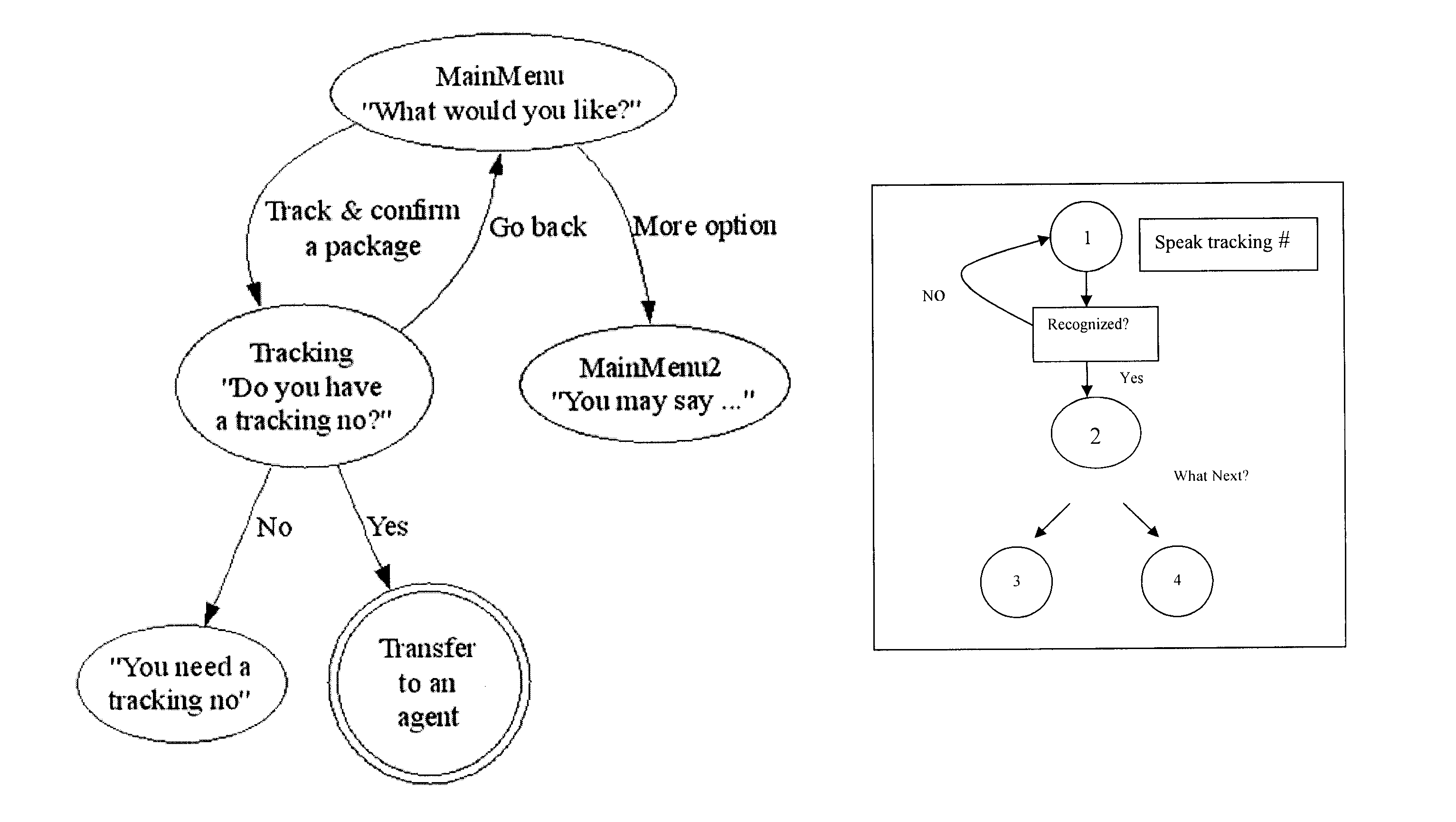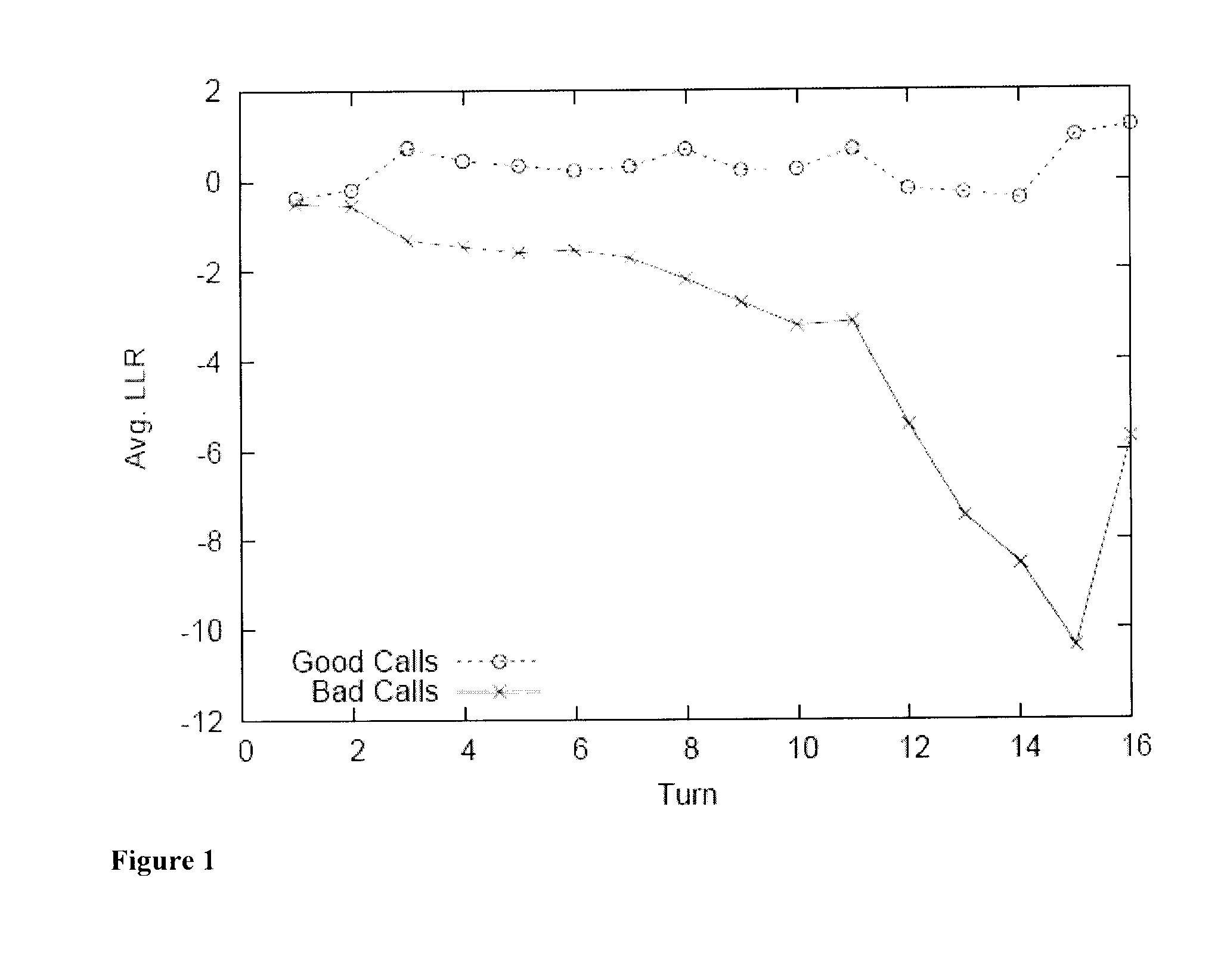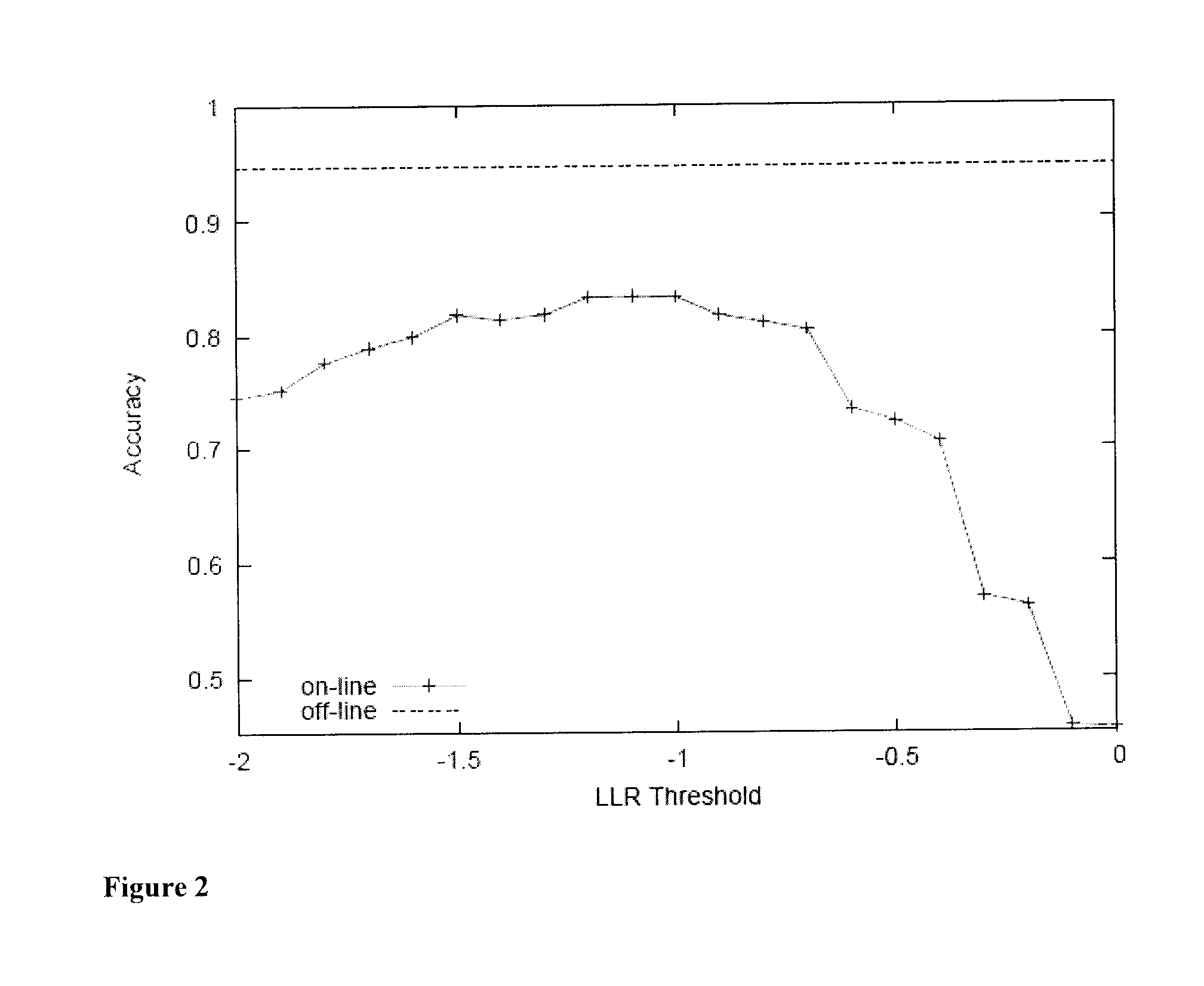System and method for automated customer service with contingent live interaction
a customer service and live interaction technology, applied in the field of system and method for automated customer service with contingent live interaction, can solve the problems of poor error recovery in automated interactions, inability to provide customers with a quality experience, and limited nature of automated interactions, so as to improve the reliability of dialog success/failur
- Summary
- Abstract
- Description
- Claims
- Application Information
AI Technical Summary
Benefits of technology
Problems solved by technology
Method used
Image
Examples
Embodiment Construction
[0025]Some embodiments might make use of transaction information and use it to learn, which might be accomplished with the help of machine learning software agents. This might allow the automated self-care system to improve its performance in the area of user interface, speech, language and classification models, application logic, and / or other areas relevant to customer and / or agent interactions.
[0026]For ease of comprehension, this application is structured in the following manner. First, the application describes techniques for offline classification of interactions. Second, the application discusses how data regarding interactions classified offline can be used to train models used for online classification. Third, the application will describe how those models can be used to detect when an interaction should be transferred from an automated interaction to a live interaction (e.g., when the interaction is “going bad”). To make concrete examples possible, the discussion below wil...
PUM
 Login to View More
Login to View More Abstract
Description
Claims
Application Information
 Login to View More
Login to View More - R&D
- Intellectual Property
- Life Sciences
- Materials
- Tech Scout
- Unparalleled Data Quality
- Higher Quality Content
- 60% Fewer Hallucinations
Browse by: Latest US Patents, China's latest patents, Technical Efficacy Thesaurus, Application Domain, Technology Topic, Popular Technical Reports.
© 2025 PatSnap. All rights reserved.Legal|Privacy policy|Modern Slavery Act Transparency Statement|Sitemap|About US| Contact US: help@patsnap.com



